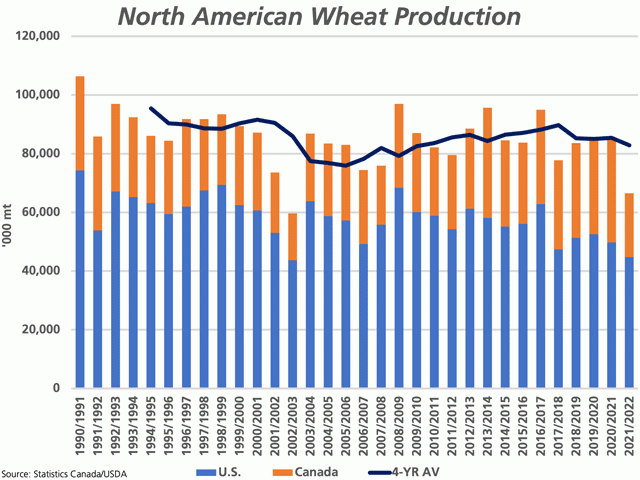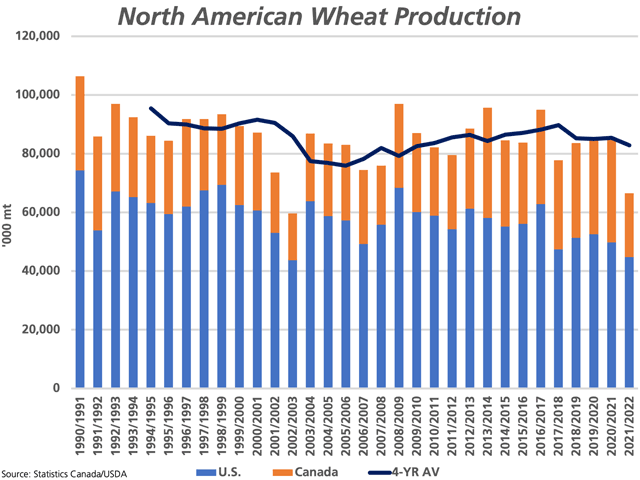Canada Markets
North American Wheat Production on the Radar
This week's bullish USDA wheat data rippled across global markets with lower-than-expected Sept. 1 United States stocks reported along with lower-than-expected U.S. all-wheat production. European milling wheat, already facing quality challenges, saw futures reach a fresh contract high on Sept. 30 and Oct. 1 (December contract), while a test of contract highs for both hard red spring wheat and hard red winter wheat is just pennies away.
The blue bars on the attached chart represent U.S. production. The production estimate for 2021 is 44.790 million metric tons (mmt), down 10% form 2020 and the smallest all-wheat crop since 2002-03. The brown bars represent Statistics Canada's estimate for Canadian all-wheat production. At an estimated 21.715 mmt, production is down 38.3% from 2020 and the smallest all-wheat crop since 2007-08.
P[L1] D[0x0] M[300x250] OOP[F] ADUNIT[] T[]
Combined estimated production of 66.605 mmt is down 21.7% from the 2020-21 crop year and is 19.8% below the four-year average, which is indicated by the blue line. This is the smallest combined all-wheat production since 2002-03, from countries representing the third and fourth largest exporters in the 2020-21 crop year.
This is seen while the largest exporter, Russia, is facing a weekly climb in the export tax designed to slow exports and control domestic prices based on a weekly formula. The Oct. 6-12 tax is reported at $57.80 metric ton (mt) USD, ($73.04/mt Canadian based on the Oct. 1 spot dollar close, or $1.99/bushel), up from $53.50/mt over the previous week. Andrey Sizov of Russia's SovEcon told the Financial Times, "It took decades for Russia to become a wheat superpower; becoming a second-tier player will require way less time."
There is a chance there is more bad news to follow when both the U.S. and Canadian statisticians get a better feel for abandoned acres or acres cut for feed. China's import demand also bears watching, with the most recent USDA forecast pointing to a slight reduction in import demand from 10.6 mmt to 10 mmt. To date, there are no signals in terms of Canadian shipments this crop year, although August data will be released within days.
Cliff Jamieson can be reached at cliff.jamieson@dtn.com
Follow him on Twitter @Cliff Jamieson
(c) Copyright 2021 DTN, LLC. All rights reserved.






Comments
To comment, please Log In or Join our Community .